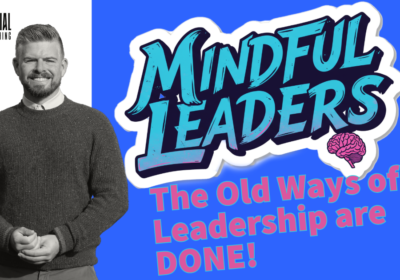5 Secrets of Trust-Driven Leadership: Forge Unbreakable Teams (Now!)

I’ll never forget the moment when Kelly Reyes, a senior leader from Google, looked me in the eye and said, “Let’s do this – I trust you.” We were in Boulder, Colorado, brainstorming solutions for a major client. Her trust wasn’t just about autonomy; it was about partnership. That Trust-Driven Leadership fueled a sense of empowerment and responsibility, ultimately leading to multi-million dollar wins for YouTube that she led through her team. It solidified a truth: trust is the bedrock of true collaboration.
That experience in Boulder popped back into my mind last week when I was listening to this Harvard Business Review podcast called “The Secret to Leading Highly Collaborative Teams.” It was packed with insights, and I couldn’t wait to share what I learned and dive deeper into the secrets of high-performing teams. Let’s pull back the curtain and together uncover the strategies that can transform your team into a powerhouse of collaboration and innovation!
Nurturing Trust: The Google Way
So, how do you build unshakeable trust within your team? It starts with empowering everyone to speak up, even when their ideas seem “out there.”
One crucial philosophy I learned at Google is to assume good intentions. A question seems off-base? Consider the person’s motive. An idea feels out of place? Dig deeper into their intent. Give them the benefit of the doubt and learn from them! This approach fosters understanding and creates a foundation for trust-driven leadership.
The HBR podcast echoed this: trust is the bedrock of collaboration. Marcus Buckingham said it best: “teams need to feel safe, and trust is the foundation. Without trust, communication crumbles, risk-taking vanishes, and collaboration suffers.”
I’ve seen it firsthand: open communication and transparency breed trust. When leaders create a safe space for honest expression, magic happens. That’s where “unbreakable success” and true “Potenzial” are unleashed.
But nurturing trust isn’t always easy, especially in today’s fast-paced world. Let’s explore strategies from the podcast and my own experience to build and maintain trust, unlocking your team’s full potential.
Lead with Trust: Set the Course
How can leaders embody trust and inspire their teams? It starts with fostering open communication.
Imagine a leader who actively seeks input, values contributions, and acknowledges perspectives. This sets clear expectations and inspires collaboration. As an executive coach, I’ve seen firsthand how leaders who model these behaviors create a culture where trust thrives.. It’s about leading by example, demonstrating the principles of trust-driven leadership in every action and decision. So, I ask you: Are you an active model of collaboration? Do your actions speak volumes. By embracing your role as a catalyst for trust, you unlock your team’s true “Potenzial” and pave the way for “unbreakable success.”
Define Roles Clearly: Smooth Sailing Ahead
Marcus Buckingham emphasized a crucial point: “Clear structure and objectives are vital. Without them, teams face frustration and conflict.” It’s like being on a sailboat in unpredictable waters. Everyone needs to know their role – the captain charts the course, the navigator plots the route, the helmsman steers, and the crew handles specific tasks. Sure, there might be lively debates amidst the waves, but ultimately, everyone’s focused on reaching the destination together.
In a team setting, ambiguity breeds frustration. It’s like everyone’s fighting for the helm, leading to chaos. Establishing clear expectations from the get-go is key. Everyone needs to understand their role, responsibilities, and how they contribute to the bigger picture.
Just as a seasoned sailor keeps a watchful eye on the ever-changing winds and currents, leaders must be attuned to the subtle shifts in team dynamics. This ongoing assessment is a key component of trust-driven leadership, allowing you to identify areas for improvement and proactively address any challenges that may arise. Through my executive coaching practice, I help leaders like you develop the self-awareness and skills necessary to continuously monitor and improve their team’s collaborative dynamics
So, how well-defined are the roles within your team? Taking the time to clarify responsibilities can significantly enhance communication and teamwork. By providing a clear roadmap, you empower your team to navigate challenges with confidence, fostering a sense of shared purpose and collective responsibility.
Positive Conflict: Harnessing the Winds of Change
The podcast challenged the common misconception about conflict, reframing it as a potential catalyst for better outcomes and improved collaboration. It’s not about avoiding conflict, but embracing and resolving it constructively to build stronger, more united teams.
This perspective is eye-opening. It shifts the narrative around conflict, seeing it not as a sign of dysfunction but as a natural result of diverse perspectives and passionate engagement. When handled well, conflict can spark innovation, challenge assumptions, and lead to more robust solutions. It’s about creating a safe space where team members feel comfortable expressing dissenting opinions, knowing their voices will be heard and valued.
This reminded me of a recent sailing trip to Catalina Island, in California. We set our sights on Two Harbors, aiming for the secluded beauty of Isthmus Cove. As always, lively debates erupted among the crew about the best course to chart. Sometimes these “pirate talks” can become quite animated, with strong opinions clashing like the waves against the hull. But ultimately, the captain makes the final decision, drawing upon the collective wisdom and diverse perspectives to navigate the most optimal route.
Just as a skilled captain leverages the power of diverse viewpoints to chart the best course, a capable leader harnesses the energy of constructive conflict to forge stronger, more resilient teams. By fostering an environment where trust and open communication prevail, you can transform disagreements into opportunities for growth and innovation.
Monitoring and Enhancing Team Dynamics: The Ongoing Voyage
The podcast concluded with a powerful reminder: collaboration isn’t a destination, it’s a journey. As leaders, we must remain vigilant, constantly monitoring and adapting our strategies to foster an environment where collaboration thrives.
Just as a seasoned sailor keeps a watchful eye on the ever-changing winds and currents, leaders must be attuned to the subtle shifts in team dynamics. Through my executive coaching practice, I help leaders like you develop the self-awareness and skills necessary to continuously monitor and improve their team’s collaborative dynamics. It’s about asking yourself:
- Are my strategies fostering trust and open communication?
- Am I turning conflict into a catalyst for growth, or is it hindering our progress?
- Does my team feel empowered to speak up, or are they holding back?
By regularly assessing the effectiveness of your leadership practices, you can identify areas for improvement and proactively address any challenges that may arise. Remember, the goal isn’t perfection but progress. It’s about making small, intentional adjustments along the way, always striving to create a more collaborative and supportive team environment.
So, I encourage you to take a moment for introspection. Reflect on your leadership style and how it impacts your team. Are you fostering a culture of trust, open communication, and constructive conflict? Are you creating an environment where collaboration can flourish, leading to “unbreakable success” and the realization of your team’s full “Potenzial”?
The journey towards building a highly collaborative team is an ongoing one. But by embracing the principles of trust-driven leadership, the insights from the HBR podcast and remaining committed to continuous improvement, you can chart a course towards a brighter, more collaborative future.
Final Thoughts: The Four Pillars of Collaborative Success
Collaboration isn’t accidental; it’s built on four pillars: trust, clear roles, communication, and constructive conflict resolution. These pillars form the foundation for thriving teams. But it’s an ongoing journey, requiring constant nurturing. Leaders must cultivate these pillars, providing the tools and environment for effective collaboration. Remember, as Kelly Reyes showed me, trust is the wind that fills the sails of any successful team.
Now, it’s your turn:
- What’s your most memorable experience with either successful or unsuccessful collaboration? What lessons did you learn?
- Have they sparked any new ideas for fostering collaboration within your team or organization?
- I’m particularly curious to learn about the specific strategies you employ to encourage collaboration in your own work environment.
Let’s keep the conversation going! Share your thoughts and experiences in the comments below. Together, we can continue to explore the fascinating dynamics of collaboration and unlock the full potential of our teams.
If you’re looking for guidance on how to build a more collaborative and successful team, I invite you to explore my executive coaching services at Das Potenzial. Together, we can chart a course towards unlocking your team’s full potential!
One Comment
Comments are closed.





October 1, 2024 at 5:30 pm
Salman
Nice Article